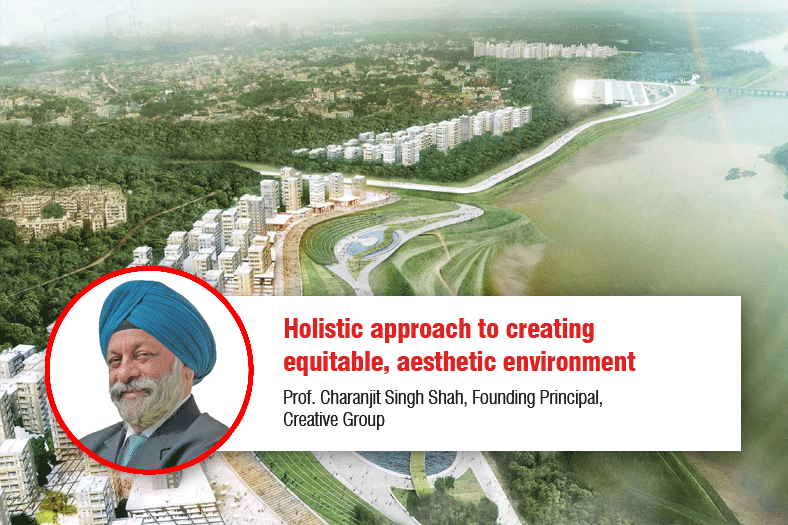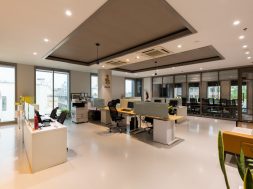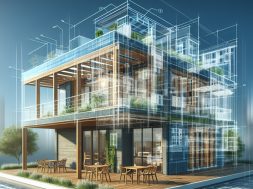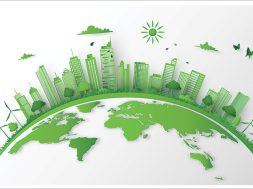Holistic approach to creating equitable, aesthetic environment

Cities need to connect more closely with the realms of ecology, technology, economics, management and humanities. According to Prof. Charanjit Singh Shah, Founding Principal, Creative Group, smart city is a city which uses information and communication technologies (ICT) to make its critical infrastructure as well as its components and public services provided, more interactive and efficient for creating more awareness.
What are the major challenges faced while developing smart cities?
The compartmentalised view has to be replaced by a holistic and interdisciplinary approach towards creating a smart, sustainable, equitable and aesthetic built environment. This requires application of theory and ideology by way of creative and lateral thinking. The dreams, fantasies and innovations need to be translated into design which responds to human, financial, socio–cultural and environmental contexts. The cities need to connect more closely with the realms of ecology, technology, economics, management and humanities. A sense of interdependence can break down the rigid boundaries and make the plans and designs more human-centric, value based, relevant to cultural and environment context.
How are smart cities leveraging construction activities in Indian cities?
There is a continual dialectic between the habitat and nature, the inside and outside, ethics and resources. It is not possible to segregate different constituents of built environment which are all interconnected by a central, intelligent nervous system and five senses; there is a haphazard growth in built masses which are not only disturbing the city habitat but also increasing the gap of man and nature.
The fascination of smart cities lies in the interplay between the infinite ideas and limited resources which include light, sun, air, rain, climate, nature, building materials, budget and time.
The purpose of design is to give personal touch and identity to a space. The recent trends in design indicate a search for emotional and human relationship with the space and the built environment. Quite often, despite meeting functional requirements using most modern techniques, materials and workmanship standards, building’s urban form is uninspiring and lifeless. A designer has to search for the relationship between consciousness and space. He has to create a living space which is emotionally responsive. This involves a new understanding and expression in terms of design.
What is the suitable approach for urban accommodation in smart cities?
We define a ‘smart city’ as a city which uses information and communication technologies, so that it’s critical infrastructure as well as its components and public services provided, are more interactive and efficient to enable citizens to be acutely aware of them. However, this augments the growth of machines disturbing the balance between technological advancements and humanistic designs.
How do you look at the technology, products and solutions available for building world-class smart cities in India?
This involves a synergy of three dimensions – a horizontal dimension of technical knowledge, hard skills, a vertical dimension of soft skills – arts, aesthetics, ecology and humanities, and a third dimension of tools, processes, methods and values. Indian cities have already taken to technology-enabled service delivery and governance. Many cities have realised the value of spending on digital initiatives and have steadily shifted to digital platforms. Cities are increasing their investments in technology-enabled solutions and, in the course of time, would choose larger systems that match their priorities and resources.
Sustainability essentially means an integrated approach to design that includes urban form and structure, conservation of natural resources, site planning, building design, micro – climate design, natural ventilation and day lighting, greenery, building resources and construction systems, energy and water conservation systems, infrastructure services, etc.
The fascination of smart cities lies in the interplay between infinite ideas and resources like light, sun, air, rain, building materials, budget and time.
Prof. Charanjit Singh Shah, Founding Principal, Creative Group
Cookie Consent
We use cookies to personalize your experience. By continuing to visit this website you agree to our Terms & Conditions, Privacy Policy and Cookie Policy.






